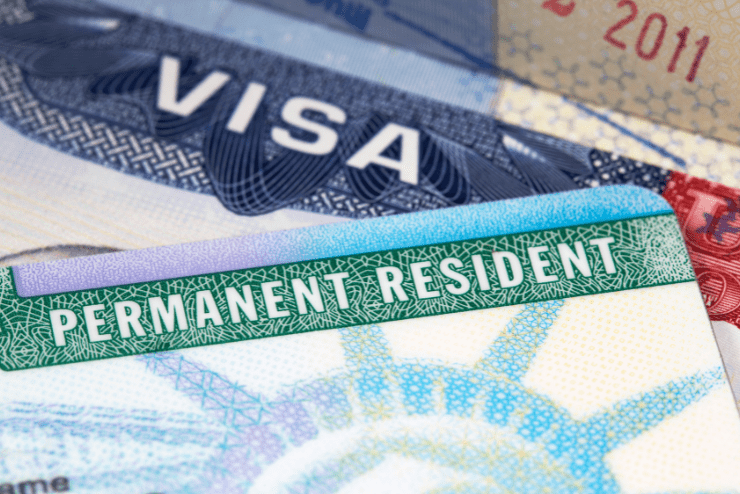If you’ve ever dreamed of living and working permanently in the United States, obtaining a U.S. Green Card is one of the most important steps in your immigration journey. But for many, the path to permanent residency is confusing, paperwork-heavy, and often overwhelming. At SwiftPass Global Immigration, we believe knowledge is power—so we’ve created this step-by-step guide to help you understand the full Green Card application process, avoid common pitfalls, and move forward with confidence.
What Is a Green Card?
A Green Card, officially known as a Permanent Resident Card, allows foreign nationals to live and work in the U.S. on a permanent basis. Green Card holders enjoy many benefits, including the right to apply for U.S. citizenship after a certain period, protection under U.S. laws, and the ability to sponsor certain family members for immigration.

Step 1: Determine Your Eligibility
Before you start the process, it’s essential to identify the correct Green Card category that fits your situation. The most common eligibility categories include:
-
Family-based Green Cards (e.g., spouse, parent, or child of a U.S. citizen)
-
Employment-based Green Cards (sponsored by a U.S. employer)
-
Diversity Visa (DV) Lottery Program
-
Refugee or Asylee Status
-
Special Immigrant Categories (e.g., religious workers, Afghan/Iraqi nationals who worked with the U.S. government)
Each category has specific requirements, so it’s crucial to choose the right one before proceeding.
Step 2: File an Immigrant Petition
In most cases, the first step involves a petition filed on your behalf. Depending on your category:
-
For family-based Green Cards, the U.S. citizen or lawful permanent resident relative files Form I-130 (Petition for Alien Relative)
-
For employment-based Green Cards, your employer files Form I-140 (Immigrant Petition for Alien Worker)
-
In some cases, you may self-petition (e.g., for EB-1 extraordinary ability category or VAWA petitions)
Once USCIS receives and approves the petition, you will move on to the next stage—either adjustment of status (if you’re in the U.S.) or consular processing (if you’re abroad).
Step 3: Wait for a Visa Number to Become Available
For categories with annual visa caps, such as employment-based or family-preference categories, you must wait for a visa number to become available. This is managed through the Visa Bulletin, issued monthly by the U.S. Department of State. Immediate relatives of U.S. citizens (spouses, parents, and unmarried children under 21) do not face waiting times, as visas are always available.
Step 4: Apply for a Green Card (Form I-485 or Consular Processing)
Once your petition is approved and a visa number is available, you can apply for the Green Card through one of two processes:
-
Adjustment of Status (Form I-485): If you’re already in the U.S. on a valid visa, you may file Form I-485 with USCIS to adjust your status to permanent resident.
-
Consular Processing: If you are outside the U.S., you will process your application through a U.S. consulate or embassy in your country. This includes submitting required documents, attending an interview, and undergoing a medical exam.
Step 5: Attend the Biometrics Appointment
After submitting your Green Card application, USCIS will schedule a biometrics appointment where your fingerprints, photo, and signature will be collected. This is a standard part of the background check process and usually takes place at a local Application Support Center (ASC).
Step 6: Prepare for and Attend Your Interview
Most Green Card applicants are required to attend an in-person interview. During the interview:
-
You may be asked about your background, relationship (for family-based cases), work (for employment-based cases), or other details to confirm your eligibility.
-
Bring all original documents, such as passports, birth certificates, and marriage certificates.
Being truthful and prepared can make a big difference in the outcome of your application.
Step 7: Receive a Decision
After your interview, USCIS (or the U.S. consulate) will issue a decision:
-
If approved, you’ll receive your Green Card by mail (if in the U.S.) or a visa in your passport to enter the U.S. (if applying abroad).
-
If denied, you will receive a written explanation and possibly instructions on how to appeal or reapply.
Step 8: Receive and Maintain Your Green Card
Once approved, you’ll receive a Green Card valid for 10 years (or 2 years for conditional Green Cards, such as those based on recent marriages). You must:
-
Renew it before it expires (Form I-90)
-
Remove conditions if applicable (Form I-751)
-
Avoid actions that could jeopardize your residency, such as long absences from the U.S. or committing certain crimes
Bonus: Applying for U.S. Citizenship
After 3 or 5 years (depending on your Green Card category), you may be eligible to apply for U.S. citizenship through naturalization. This final step comes with additional rights and responsibilities, including the right to vote.
Key Tips for Success
-
Work with a licensed immigration consultant or attorney to avoid delays or denials.
-
Keep copies of all documents and receipts.
-
Stay informed by regularly checking USCIS processing times and the Visa Bulletin.
Need Help Navigating the Green Card Process?
At SwiftPass Global Immigration, we specialize in guiding individuals and families through the entire U.S. immigration process—from petitions and paperwork to interviews and beyond. Whether you’re applying from Africa, the Middle East, or anywhere around the world, our expert team ensures you don’t miss a step. Contact us and let us help you take the first step toward permanent residency in the U.S.